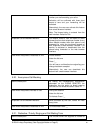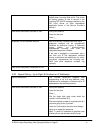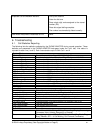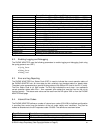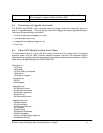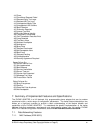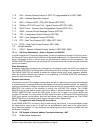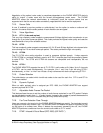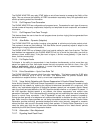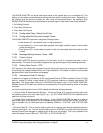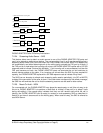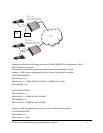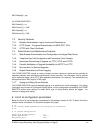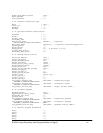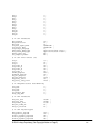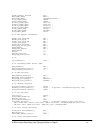
The PHONE ADAPTER may relay DTMF digits as out-of-band events to preserve the fidelity of the
digits. This can enhance the reliability of DTMF transmission required by many IVR applications such
as dial-up banking and airline information.
7.2.10. Call Progress Tone Generation
The PHONE ADAPTER has configurable call progress tones. Parameters for each type of tone may
include number of frequency components, frequency and amplitude of each component, and cadence
information.
7.2.11. Call Progress Tone Pass Through
This feature allows the user to hear the call progress tones (such as ringing) that are generated from
the far-end network.
7.2.12. Jitter Buffer – Dynamic (Adaptive)
The PHONE ADAPTER can buffer incoming voice packets to minimize out-of-order packet arrival.
This process is known as jitter buffering. The Jitter Buffer size will proactively adjust or adapt in size
depending on changing network conditions.
The PHONE ADAPTER has a Network Jitter Level control setting for each line of service. The jitter
level decides how aggressively the PHONE ADAPTER will try to shrink the jitter buffer over time to
achieve a lower overall delay. If the jitter level is higher, it shrinks more gradually. If jitter level is
lower, it shrinks more quickly.
7.2.13. Full Duplex Audio
Full-duplex is the ability to communicate in two directions simultaneously so that more than one
person can speak at a time. Half-duplex means that only one person can talk at a time – like a CB
radio or walkie-talkie, which is unnatural in normal free-flowing two-way communications. The
PHONE ADAPTER supports full-duplex audio.
7.2.14. Echo Cancellation – Up to 8 ms Echo Tail
The PHONE ADAPTER supports hybrid line echo cancellation. This feature uses the G.165 echo
canceller to eliminate up to 8 ms of line echo. This feature does not provide acoustic echo
cancellation on endpoint devices – that is, an end user’s speakerphone.
7.2.15. Voice Activity Detection with Silence Suppression & Comfort Noise Generation
Voice Activity Detection (VAD) and Silence Suppression is a means of increasing the number of calls
supported by the network by reducing the required bi-directional bandwidth for a single call. VAD
uses a very sophisticated algorithm to distinguish between speech and non-speech signals. Based
upon the current and past statistics, the VAD algorithm decides whether or not speech is present. If
the VAD algorithm decides speech is not present, the silence suppression and comfort noise
generation is activated. This is accomplished by removing and not transmitting the natural silence that
occurs in normal 2-way connection – the IP bandwidth is used only when someone is speaking.
During the silent periods of a telephone call additional bandwidth is available for other voice calls or
data traffic since the silence packets are not being transmitted across the network. Comfort Noise
Generation provides artificially generated background white noise (sounds), designed to reassure
callers that their calls are still connected during silent periods. If Comfort Noise Generation is not
used, the caller may think the call has been disconnected because of the “dead silence” periods
created by the VAD and Silence Suppression feature.
7.2.16. Attenuation / Gain Adjustment
7.2.17. Signaling Hook Flash Event
© 2004 Linksys Proprietary (See Copyright Notice on Page 2)
98



